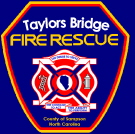 Home    Home Fireplace Safety Inside the Home Urban-Interface Areas Wood Shake and Shingled Roof Hazard |
Precautions you can take to protect your home. It's your choice...remove your home from the line of fire! The House Use only fire resistant materials on the exterior of your home whether roof, siding, decking or trim. Protect interiors from sparks and embers by boxing in eaves, screening vents, and underpinning or screening beneath porches, decks, and the house itself. Do not use fiberglass screening. Chimneys should extend above the roof line and be topped with a half inch mesh spark arrester. Home Care Keep roofs free of debris. Leaves, pine straw, moss and twigs that collect on the roof and in gutters invite disaster. Safely dispose of stove, fireplace, and grill ashes. First place them in a metal bucket, soak with water, and then bury them in mineral soil. Faucets should be located on each side of your home and near any outbuildings. Install them, too, in areas of the yard where fire hazards exist, or where wildfire could enter your yard. Have a coiled hose attached to faucets on opposite sides of your home. Hand tools such as rakes, shovels, and axes should be readily available along with a ladder that will reach your roof. Access Narrow, steep, or winding roads and driveways can obstruct the movement of firefighting equipment. Make sure firefighters can identify the entrance to your home by marking the drive with a sturdy, easy to read sign that gives your name and address. For your personal safety, plan an alternate escpae route in case your primary access is blocked by fire or smoke. Surroundings Protecting your home from wildfire starts with the trees around it. Pay particular attention to the trees within 100 feet of your house:
It is best to build your home on a flat area rather than on a slope because wildfire spreads rapidly uphill. Homes situated on steep slopes, especially slopes that face south or southwest, should have wide firebreaks (at least 75 feet) on the downslope side to lessen a fire's impact. |
||||||